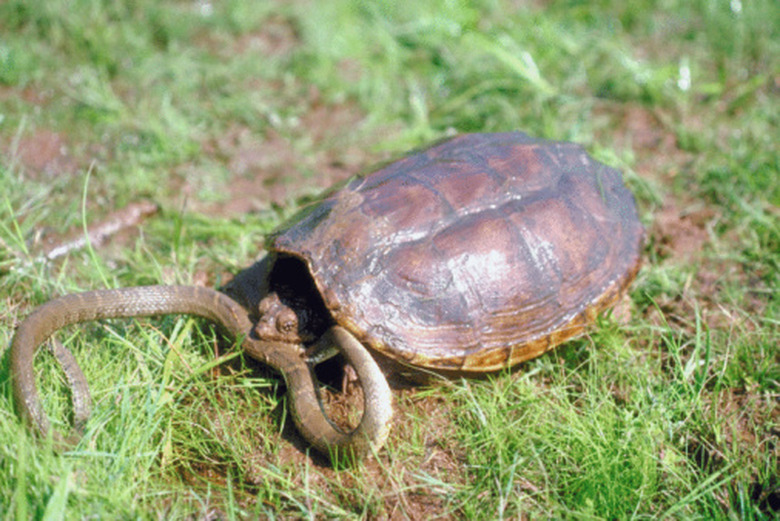How To Make A Turtle Grow Faster
Tip
You can offer your turtle cooked chicken, beef and beef heart as occasional treats. Do not offer these meats raw, however, as they may be infected with salmonella.
Warning
Avoid feeding your turtle frozen feeder fish, as these lose vital vitamins such as thiamine during the freezing process.
Several species of turtles can be kept in captivity. Turtles are generally easy to look after, although if turtles are not kept in adequate conditions, their growth may be stunted. If your turtle does not appear to be growing fast enough, check that its living conditions are meeting its requirements and observe your turtle's behavior carefully.
Step 1
Measure your turtle carefully, using a ruler or tape measure. Measure the turtle's total length and width, and the length and width of its shell. Weigh your turtle. Record this information and the date so you can monitor your turtle's growth.
Step 2
Check your turtle's tank size. For most turtles, the minimum size is 20 gallons, but all turtles will enjoy as much space as possible.
Step 3
Monitor the temperatures in the tank. The tank should be around 75 degrees Fahrenheit, rising to around 85 degrees Fahrenheit in the basking area. These temperatures are essential for normal body functions, and without them the turtle's development may be stunted or the animal may become ill.
Step 4
Feed your turtle correctly. A turtle's diet should change as it grows older — younger turtles enjoy a high-protein diet, but change to a more vegetarian diet as the turtle gets older. Feed young turtles every day. Turtle pellets should make up no more than 25 percent of your turtle's diet. Feed protein sources, such as earthworms and live feeder fish, to make up 25 percent of the diet, and 50 percent plant matter, such as dandelions, carrots, apples and melons.
Step 5
Use a high-quality vitamin supplement. Sprinkle it over your turtle's food twice a week. Provide a calcium stone or cuttlebone to help your turtle get its calcium requirements.
Step 6
Monitor your turtle for signs of illness. This can include closed or cloudy eyes, open-mouth breathing, runny stools, lack of appetite, a swollen face, mucus around the nose and mouth or listlessness. Take a sick turtle to a reptile vet as soon as possible.
Step 7
Record your turtle's measurements over a few weeks, and take this record and your turtle to a vet. Turtles who are fed and looked after correctly should grow rapidly, and consistently, until they reach full size.
References
- California Turtle and Tortoise Club: Care of Desert Tortoises
- Anapsid.org; Melissa Kaplan's Herp Care Collection; Red-Eared Sliders; 1994
- All Turtles: Turtle FAQs
- World Chelonian Trust; Basic Care — Water Turtles; Paula Morris
- "Turtles and Tortoises for Dummies"; Liz Palika; 2001
